What is the Difference Between Blinds and Drapes?
TLDR;
Blinds and drapes differ mainly in structure and function: blinds are made of hard, adjustable slats for precise light control and a modern look, while drapes are long, fabric panels offering softness, elegance, and better insulation. The best choice depends on your needs for light control, insulation, style, and maintenance.
What Are Blinds?
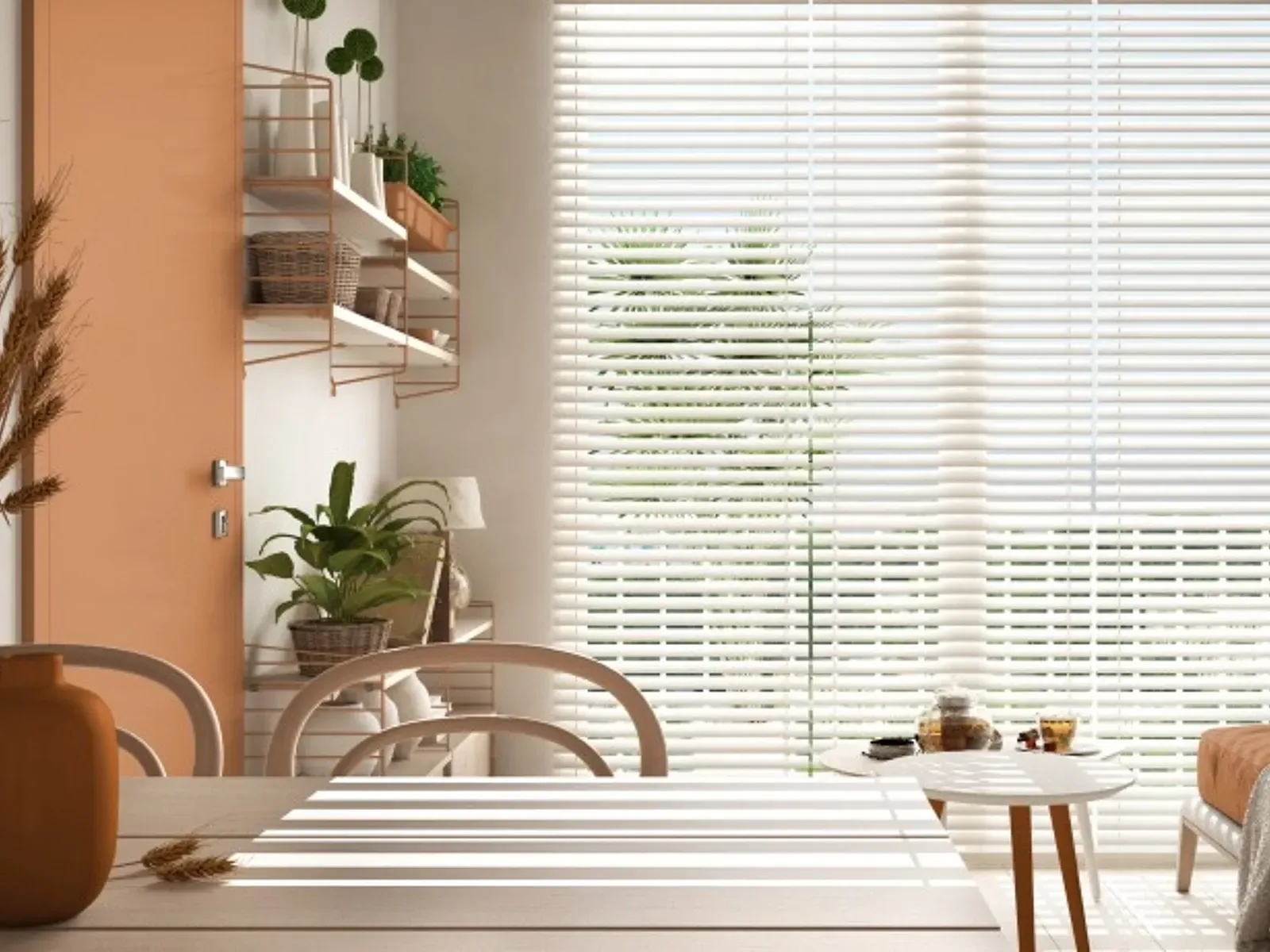
Blinds are hard window coverings made from horizontal or vertical slats that tilt open or closed to control light and privacy.
Common Blind Materials
- Wood – Classic and natural, great for living spaces
- Faux wood – Moisture-resistant and cost-effective
- Aluminum – Sleek and modern, ideal for offices or kitchens
- Vinyl – Lightweight and budget-friendly
Popular Types of Blinds
- Venetian blinds – Horizontal slats, commonly wood or faux wood
- Vertical blinds – Best for sliding doors and large windows
- Mini blinds – Slimmer slats, good for smaller windows
- Motorized blinds – Controlled via remote, app, or voice
Operation Styles
- Corded or wand tilt – Traditional but less safe for kids
- Cordless – Safer and cleaner appearance
- Smart blinds – Integrates with Alexa, Google Home, or apps
Why Choose Blinds?
- Precise light control with tilt mechanism
- Easy to clean and maintain
- Sleek, minimal design for modern interiors
- Durable and moisture-resistant options
What Are Drapes?
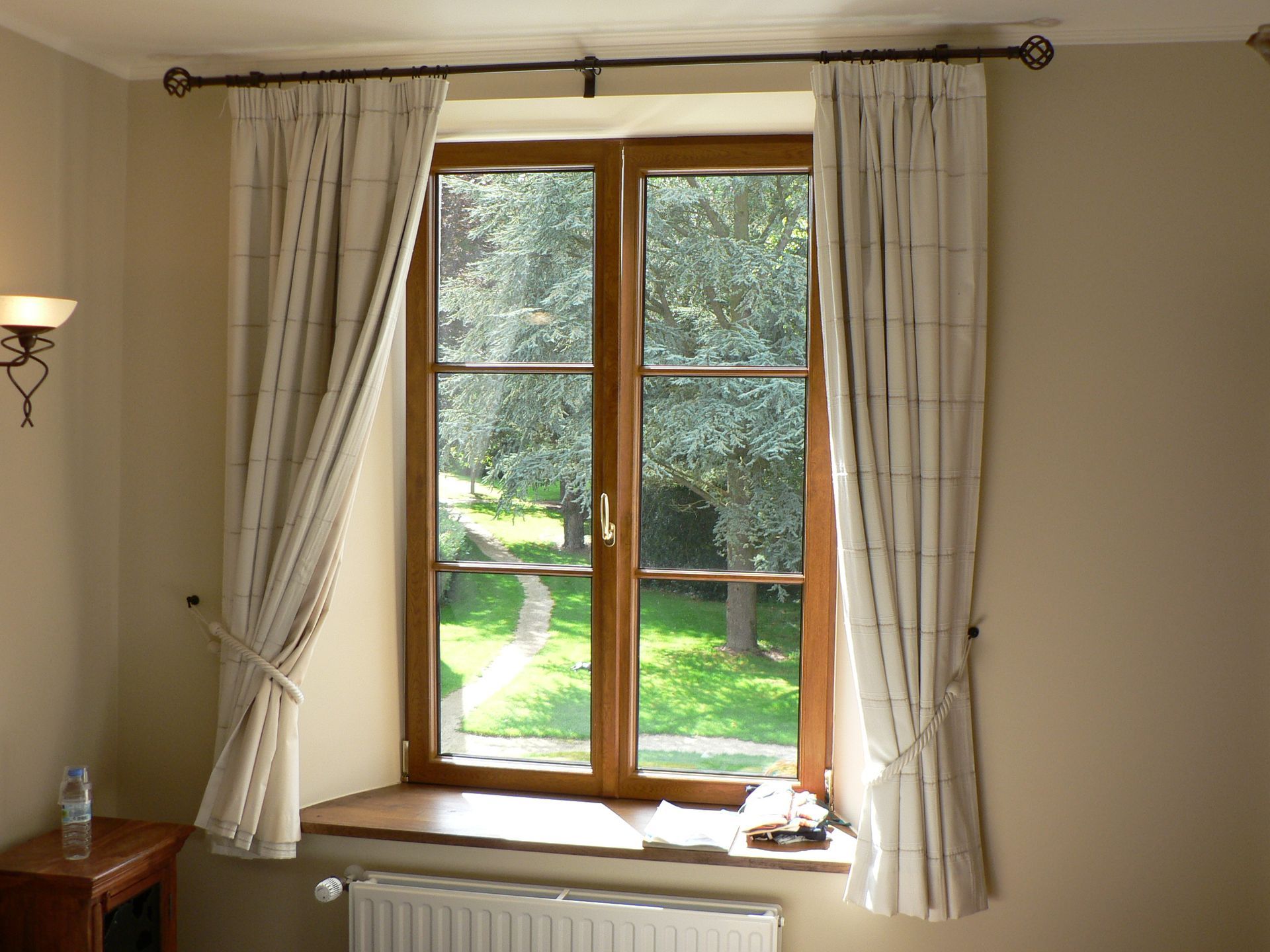
Drapes are fabric panels that hang vertically from a rod, typically extending to the floor and often lined for light control and insulation.
Drapes vs. Curtains
- Drapes: Heavier, lined, and formal
- Curtains: Lighter, unlined, and more casual
Common Drapery Materials
- Cotton – Versatile and breathable
- Velvet – Luxurious and insulating
- Linen – Light and textured for casual looks
- Silk – Elegant but high-maintenance
Drapery Styles
- Blackout drapes – Ideal for bedrooms and media rooms.
If you're selecting blackout or decorative drapes for a bedroom, explore the
Best Bedroom Drapery Colors to complement your design style and improve the room’s ambiance.
- Thermal drapes – Provide insulation against heat and cold
- Pleated drapes – Formal with pinch, goblet, or box pleats
- Grommet or tab-top – More casual and contemporary
Why Choose Drapes?
- Excellent insulation and energy efficiency
- Noise reduction for quieter rooms
- Adds softness and drama to interiors
- Customizable with fabric, pleat styles, and lengths
Side-by-Side Comparison of Blinds and Drapes
| Feature | Blinds | Drapes |
|---|---|---|
| Light Control | Adjustable slats for precision | Full blockage or soft filtering |
| Privacy | High when tilted closed | High when drawn |
| Insulation | Moderate, less effective | Excellent with thermal lining |
| Style | Modern, minimalist | Elegant, dramatic |
| Maintenance | Easy – wipe or dust | Harder – wash or dry clean |
| Cost | Generally lower upfront | Higher due to custom fabrics |
| Best Rooms | Kitchens, bathrooms, offices | Bedrooms, dining rooms, living rooms |
Window Treatments Comparison by Style

Best Window Coverings for Modern Homes
Blinds are often the go-to for clean, uncluttered, modern aesthetics. Especially in:
- Minimalist spaces with neutral color palettes
- Homes with smart automation systems
- Compact rooms where bulky fabrics aren’t ideal
Layering Blinds and Drapes for a Designer Look
Combining the function of blinds with the softness of drapes allows you to:
- Use
blinds for daytime light control
- Layer with
sheer or blackout drapes for elegance and insulation
- Add depth and a finished look to windows
Light, Privacy, and Maintenance: Functional Differences

Light Control
- Blinds: Adjust slats to let in partial light or full sun
- Drapes: Block or allow light depending on fabric type and lining
Privacy
- Blinds: Tilt for privacy without losing daylight
- Drapes: Total privacy when closed, limited when open
Maintenance
- Blinds: Require regular dusting or wiping
- Drapes: Need vacuuming, washing, or professional cleaning
Energy Efficiency and Insulation
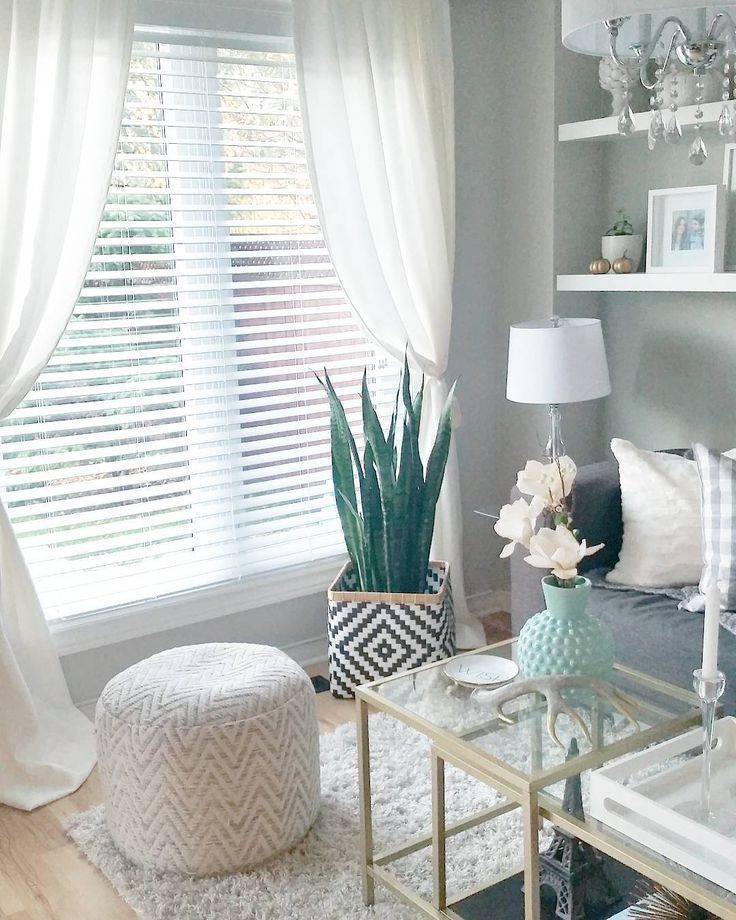
Which is More Energy Efficient?
- Drapes win for insulation — thermal or blackout linings trap heat in winter and block heat in summer
- Blinds offer minimal insulation but better airflow in warm climates
Ideal Window Treatments by Climate
- Cold Climates: Insulated drapes retain heat
- Hot Climates: Blinds allow airflow and block sunlight
Smart Features and Automation
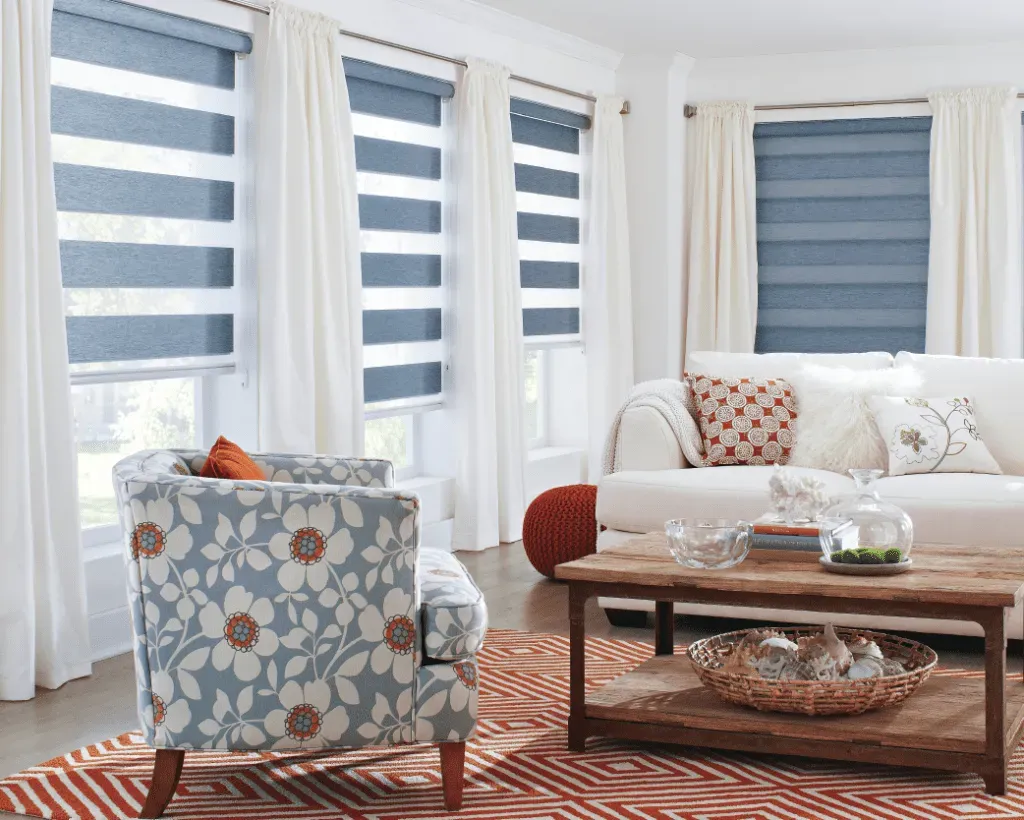
Smart Window Solutions
Modern homes now integrate smart blinds and automated drapes into their systems. Features include:
- App-based control from anywhere
- Scheduled opening/closing
- Voice control via Alexa, Google Assistant, or Siri
- Solar-powered options for energy savings
Automated window treatments are ideal for:
- Large homes with multiple windows
- People with mobility challenges
- Climate control and privacy on a schedule
Best Window Treatments by Room
| Room | Best Option | Why |
|---|---|---|
| Bedroom | Drapes | Blocks light, reduces noise, adds cozy atmosphere |
| Living Room | Layered | Blinds + Drapes offer flexibility and design impact |
| Kitchen | Blinds | Easy to clean, moisture-resistant |
| Bathroom | Blinds | Compact and functional in humid environments |
| Dining Room | Drapes | Adds warmth and formality |
Cost Comparison and Long-Term Value
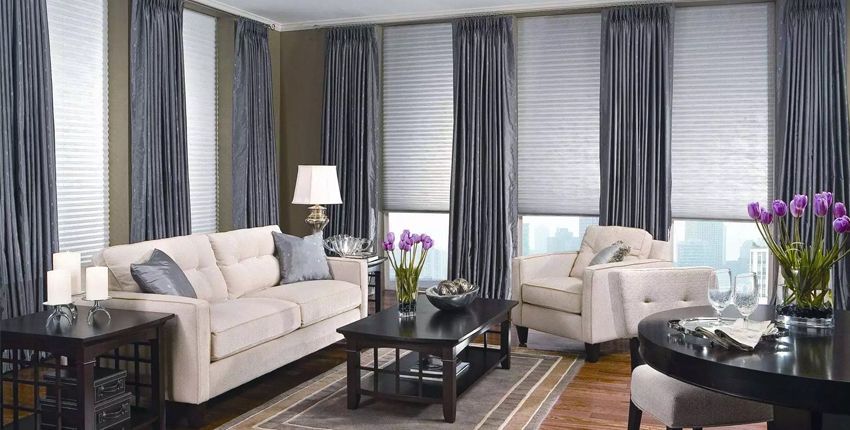
Are Blinds Cheaper Than Drapes?
- Blinds have a lower initial cost, especially standard vinyl or aluminum models
- Drapes often involve custom fitting, higher material costs, and hardware
Long-Term Value
- Drapes may reduce energy costs in colder climates
- Blinds are more durable and less likely to need professional cleaning
- Maintenance and replacement frequency should factor into ROI
Cultural and Climate-Based Preferences
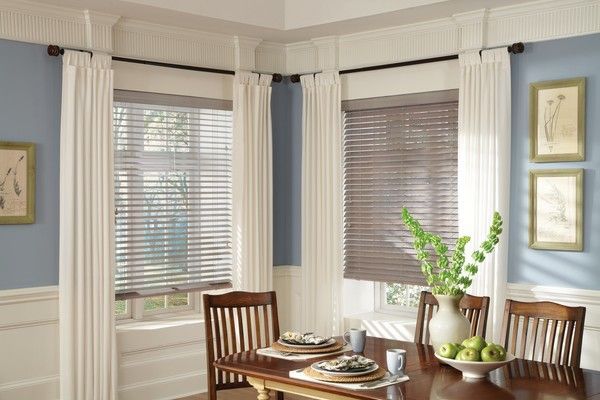
Geography and Culture Matter
- Southern U.S. or Tropical Areas: Blinds preferred for ventilation
- Northern States or Canada: Drapes for insulation and warmth
- Traditional Homes: Heavy, pleated drapes match classic decor
- Modern Condos: Sleek blinds match streamlined architecture
Cultural tastes also affect fabric choice, patterns, and openness to automation.
Should I Get Blinds or Drapes?
When choosing between blinds and drapes, consider your:
- Style preference – clean vs. soft
- Room type and use – moisture, privacy, light
- Budget – upfront and long-term
- Climate – insulation or airflow needed
- Maintenance capacity – ease of cleaning
At
Simply Windows, we help homeowners, renters, and interior design enthusiasts make the perfect window treatment decisions based on lifestyle, space, and design goals.

